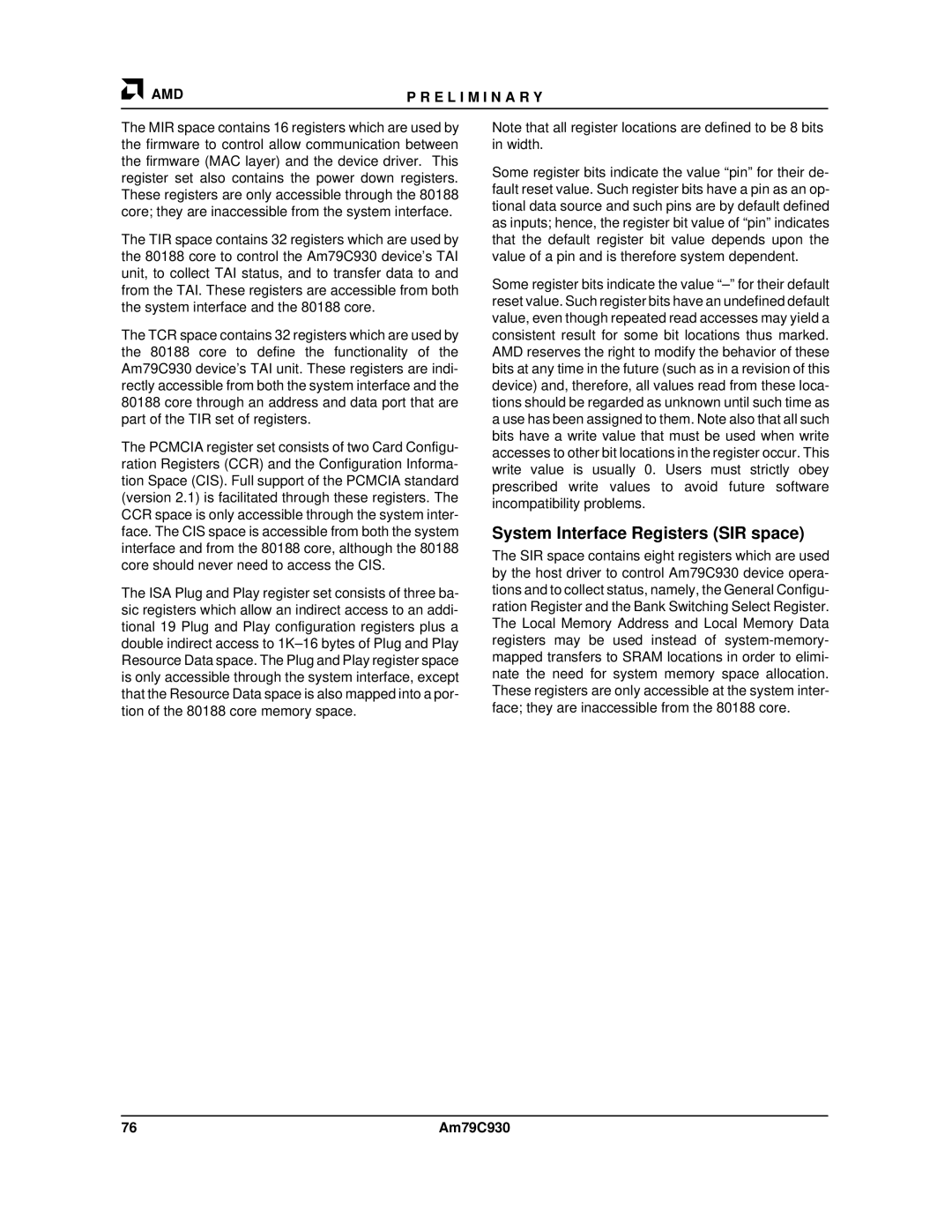
AMD | P R E L I M I N A R Y |
|
|
The MIR space contains 16 registers which are used by the firmware to control allow communication between the firmware (MAC layer) and the device driver. This register set also contains the power down registers. These registers are only accessible through the 80188 core; they are inaccessible from the system interface.
The TIR space contains 32 registers which are used by the 80188 core to control the Am79C930 device's TAI unit, to collect TAI status, and to transfer data to and from the TAI. These registers are accessible from both the system interface and the 80188 core.
The TCR space contains 32 registers which are used by the 80188 core to define the functionality of the Am79C930 device's TAI unit. These registers are indi- rectly accessible from both the system interface and the 80188 core through an address and data port that are part of the TIR set of registers.
The PCMCIA register set consists of two Card Configu- ration Registers (CCR) and the Configuration Informa- tion Space (CIS). Full support of the PCMCIA standard (version 2.1) is facilitated through these registers. The CCR space is only accessible through the system inter- face. The CIS space is accessible from both the system interface and from the 80188 core, although the 80188 core should never need to access the CIS.
The ISA Plug and Play register set consists of three ba- sic registers which allow an indirect access to an addi- tional 19 Plug and Play configuration registers plus a double indirect access to
Note that all register locations are defined to be 8 bits in width.
Some register bits indicate the value “pin” for their de- fault reset value. Such register bits have a pin as an op- tional data source and such pins are by default defined as inputs; hence, the register bit value of “pin” indicates that the default register bit value depends upon the value of a pin and is therefore system dependent.
Some register bits indicate the value
System Interface Registers (SIR space)
The SIR space contains eight registers which are used by the host driver to control Am79C930 device opera- tions and to collect status, namely, the General Configu- ration Register and the Bank Switching Select Register. The Local Memory Address and Local Memory Data registers may be used instead of
76 | Am79C930 |
